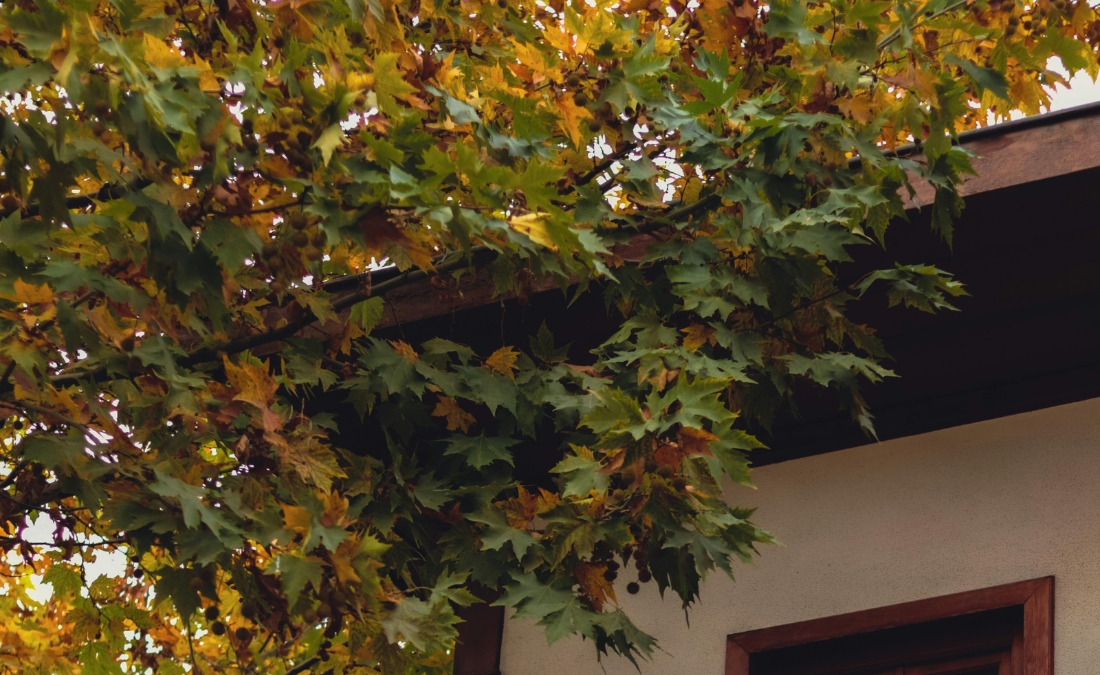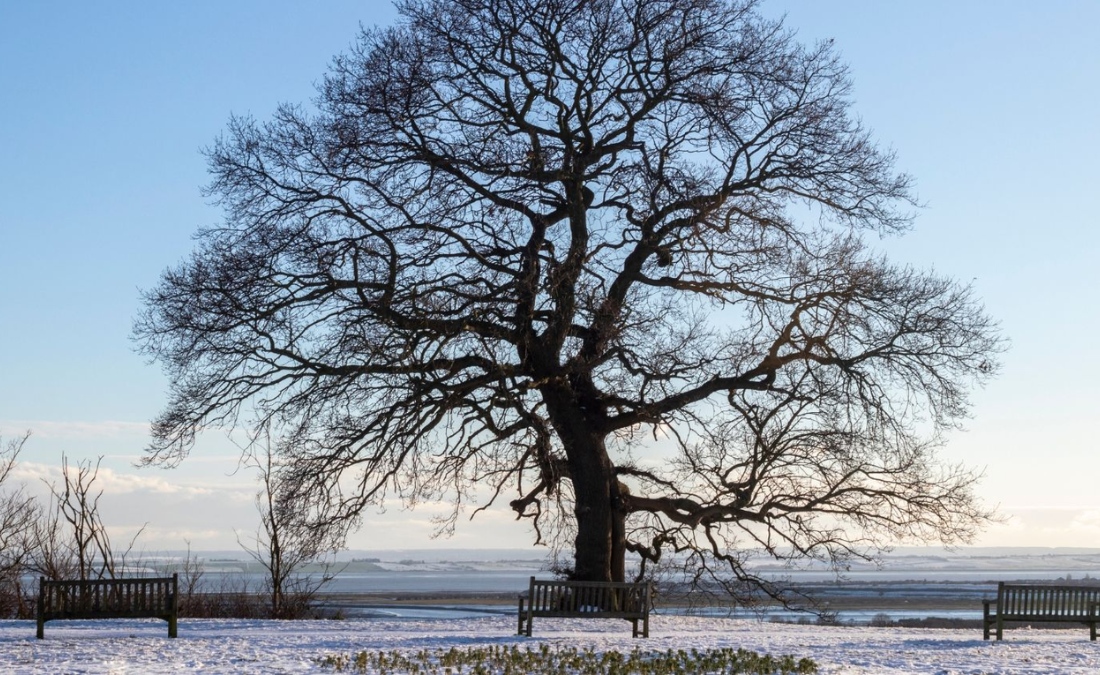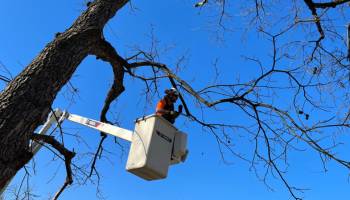4 Best Native Trees to Plant on Your Parkville Property
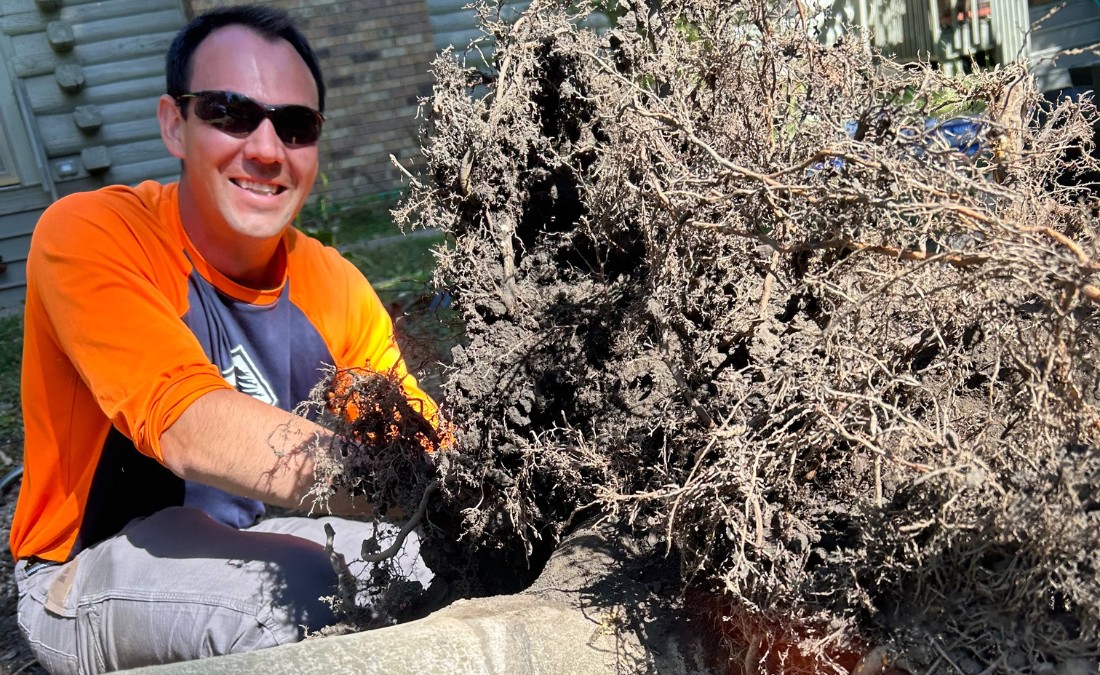
Planting native trees creates a beautiful, low-maintenance yard and supports local ecosystems. Discover four great native tree options for Parkville properties.
Looking at the space in your yard and thinking about planting a tree? Consider planting a native species! Native trees are easier to grow, can give you a beautiful yard, and provide several environmental benefits. Learn more about four trees indigenous to Kansas City that will be perfect for your landscape.
Key Takeaways:
- Eastern redbud trees are compact natives (20-30 feet) with stunning pink spring blooms, heart-shaped leaves that change color seasonally, and various cultivars to suit different spaces.
- Eastern hop hornbeam trees are low-maintenance, urban-friendly options that grow to 40 feet and tolerate Kansas City’s clay soil.
- River birch trees feature unique peeling cinnamon-colored bark, grow quickly up to 70 feet, handle heat and wet conditions well, and show good resistance to common birch pests.
- White oak trees are majestic, long-lived shade trees that can grow up to 80 feet tall. Their nuts support local wildlife, and despite being more resistant than other oak species, they require monitoring for oak wilt.
4 Native Trees to Plant on Your Parkville Property
When you decide to plant a new tree in your yard, planting a native species is a great way to benefit the local ecosystem. Four trees we recommend planting this spring include:
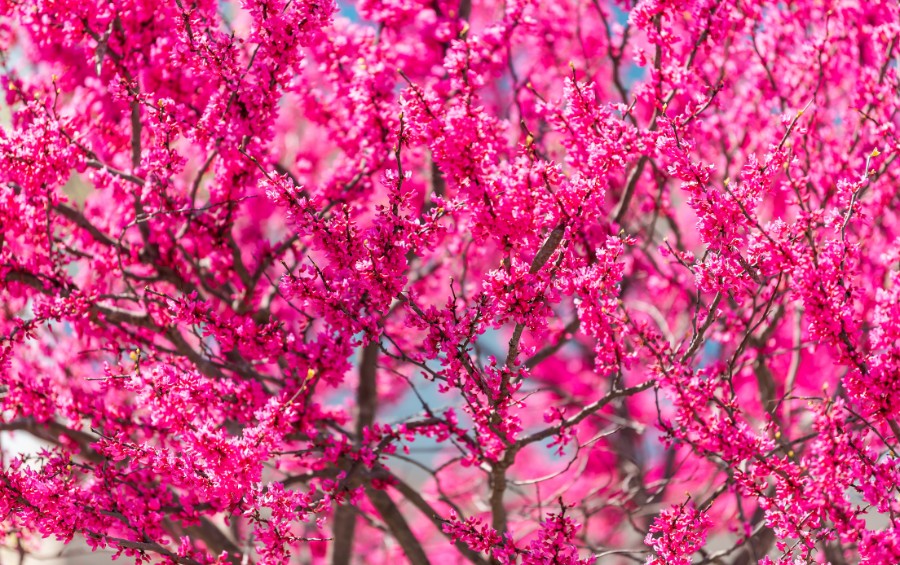
1. Eastern Redbud
The eastern redbud (Cercis canadensis) is a native species that’s on the small side, typically reaching 20-30 feet, but packing plenty of beauty into a small package.
The season with the most interest for the eastern redbud is the early spring when they bloom. Its pink flowers bloom by April, making it one of the most eye-catching native species. The leaves are also unique, with a distinct heart shape that starts as red, becomes green in the summer, and finishes the growing season with a yellow display in the fall.
There are different cultivars of redbuds that can help you tailor the tree to your needs and the space you have. For instance, the ‘Ace of Hearts’ cultivar is much more compact (growing to only around 10 feet). Another popular cultivar is the ‘Hearts of Gold’ with golden leaves.
Redbuds are relatively easy to care for but face a few concerns. They are susceptible to stem canker, verticillium wilt, leaf spots, and some insects like aphids, scales, or spider mites. Additionally, the trees are not long-lived, though their roots can produce new shoots given the right conditions and time.
Redbud Fast Facts
- Mature Height: 20-30 feet
- Mature Width: 25-35 feet
- Daily Sunlight: Full sun (6 hours) or partial sun (4-6 hours)
- Soil Preference: Well-drained soil
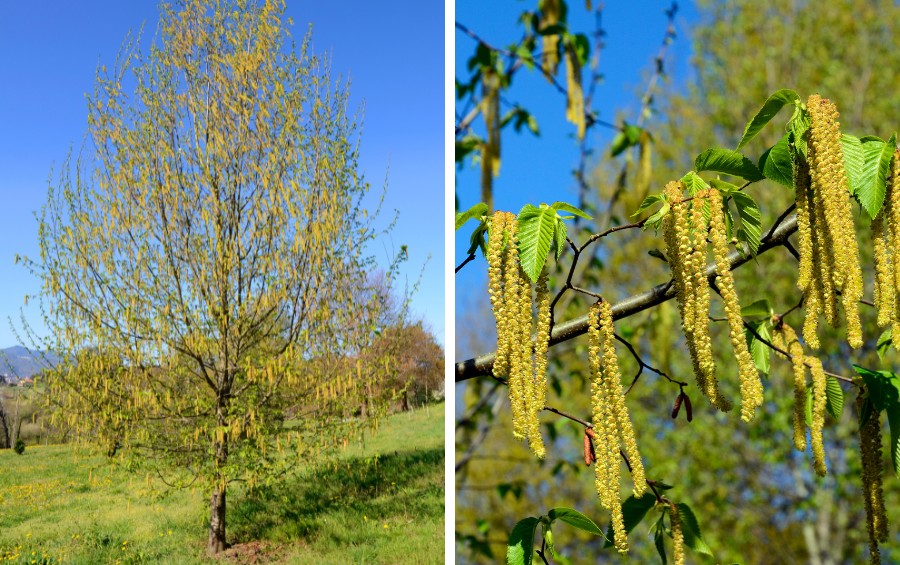
Left to Right: Hop hornbeam tree across a yard; close-up of hornbeam catkins.
2. Eastern Hop Hornbeam
The eastern hop hornbeam (Ostrya virginiana) is a nice compromise between a large shade tree and an ornamental. They are low maintenance and easy to take care of, even in the dense urban environment of Kansas City.
These specimens can grow up to 40 feet, though it takes them a long time to reach their maximum height. Hornbeams work well as understory trees that complement any shade trees on your property. Males have prominent catkins throughout the winter, giving them extra interest after their leaves fall.
The eastern hop hornbeam is ideal for low-maintenance landscaping. This species tolerates most soils and does not need excessive sunlight. Even better for Kansas City residents, it handles our clay soil very well.
There are no real insect and disease concerns for the eastern hop hornbeam. As long as you keep it watered during a drought when its leaves turn brown and have a professional prune it occasionally, you’ll find yourself with a healthy and sturdy tree.
Eastern Hop Hornbeam Fast Facts
- Mature Height: 25-40 feet
- Mature Width: 20-30 feet
- Daily Sunlight: Partial sunlight (4-6 hours)
- Soil Preference: Tolerates most soils but prefers well-drained soil
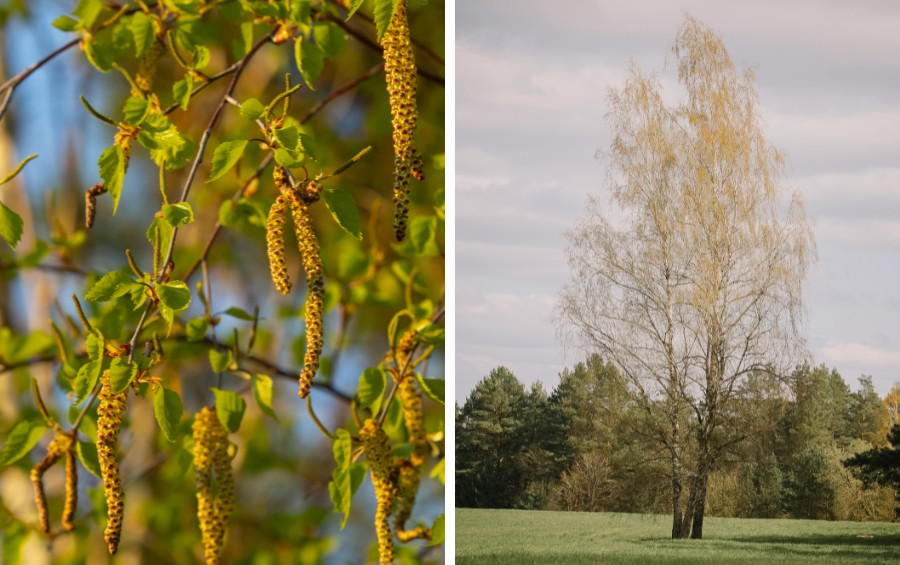
Left: Catkin flowers of a river birch; Right: River birch full of catkins
3. River Birch
River birch (Betula nigra) is a medium-sized indigenous species with some of the most unique bark you will find. The cinnamon-colored bark looks like it is peeling off the tree, giving it great interest in all four seasons.
These trees grow quickly, making them excellent replacements for removed trees. Ensure you have enough space in your yard for a river birch, as it can grow up to 70 feet tall.
River birches are tolerant of many environmental stressors that may disrupt other trees. They are also one of the most heat-resistant birches (something that is critical when we have heatwaves). As the name implies, this birch does well in wet conditions. So, even if you have a heavy clay soil with poor drainage, you can still likely grow one.
Unlike other birch species, river birches are relatively resistant to most common insects and diseases that target birch. River birch is even resistant to the bronze birch borer, though the pest can still attack them through broken limbs. Other pest problems include aphids and leaf miners.
River Birch Fast Facts
- Mature Height: 40-70 feet
- Mature Width: 40-60 feet
- Daily Sunlight: Full sun (6 hours) to partial sun (4-6 hours)
- Soil Preference: Moist, well-drained soil
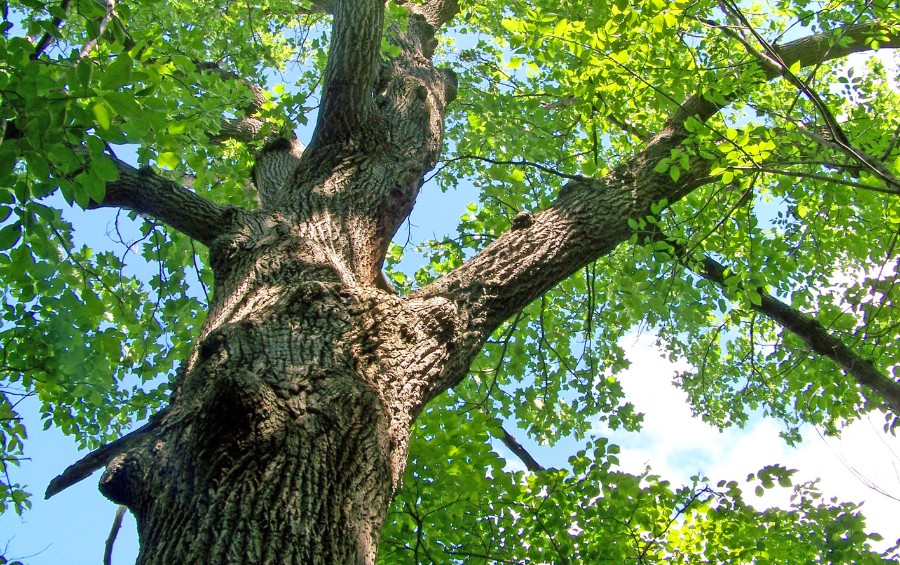
4. White Oak
White oak (Quercus alba) is the perfect choice if you have a large yard and want a tree to be the centerpiece of it. These stately specimens can grow up to 80 feet tall and are one of the most classic species in the United States.
When you plant a white oak, you aren’t just planting a tree for yourself but one for generations. When you take care of them, oaks can survive for multiple generations and be a fixture for your property and for your children to enjoy. The branches are also durable, so you won’t have to worry as much about them breaking off during a storm (though you should always use caution around trees).
Oaks are also among the most important species in our environment. Their nuts support small wildlife, and their branches are ideal places for birds to rest or build nests.
The main drawback of oaks is their susceptibility to diseases, most notably oak wilt. White oaks are more resistant to the fungal disease, but you must monitor for signs of oak wilt in your neighborhood and have an arborist inject the tree with fungicides to protect it. Other issues include scale insects, leaf miners, and anthracnose.
White Oak Fast Facts
- Mature Height: 50-80 feet
- Mature Width: 50-80 feet
- Daily Sunlight: Full sun (6 hours daily)
- Soil Preference: Prefers moist, loamy soil, but tolerates most conditions
Frequently Asked Questions About Native Trees
Want to learn more about our local trees? We’ve answered some of the common questions we get from homeowners when they want to plant native trees.
Should you only plant native trees in your yard?
While native trees are often some of the best choices, you do not have to plant them exclusively. Some non-native species, like the Japanese maple or Japanese tree lilac, do well in Kansas City yards. However, we don’t recommend only planting non-native species, as indigenous species benefit our local ecosystem.
What are some species to avoid planting in Kansas City?
Some of the trees we recommend avoiding in Kansas City include:
- Bradford pears (invasive and have weak wood)
- Red maples (there are too many in our area)
- Silver maples (their branches are weak)
- European white birch (they face too many insect problems)
Is a native tree guaranteed to grow in my yard?
Just because a tree is a native species does not mean it will grow in your yard effectively. The tree may not be able to establish itself in the type of soil you have in your yard, or there might not be enough nutrients to support growth. A shifting climate can also lead to indigenous species becoming unideal for an area they used to flourish in. Consult an arborist before you plant and ask them for recommendations on what kind of trees will thrive on your property.
Arbor Masters Can Help You Care for Your Newly Planted Native Trees
While growing native trees is often easier than trying to add species from other parts of the world, they still require work. From fertilizing to mulching to pruning, keeping them healthy and in good condition can be a lot of work. When you need help with your trees, the team at Arbor Masters can help.
Our Liberty and Parkville teams are well-versed in our native species and can help you care for them and keep them healthy. Whether your trees need an inspection or you’d like to help them recover after storm damage, we can help. Call us today at 913-441-8888 or request a quote online.
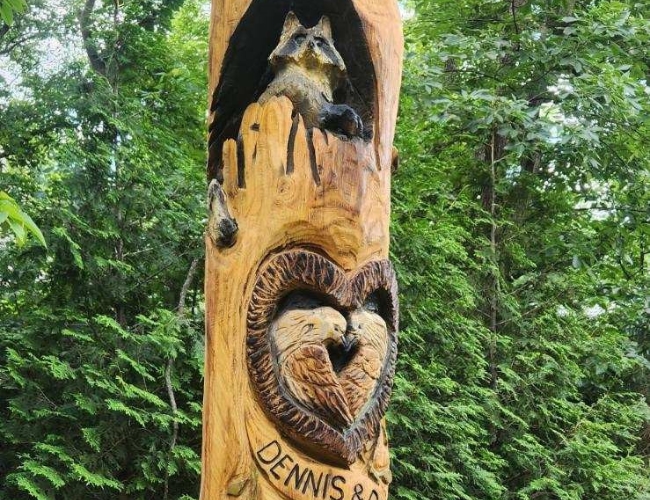
Get the latest local news, tree care tips, special offers, and company updates directly to your inbox! It's easy to subscribe and there's no spam - we promise.
"*" indicates required fields


